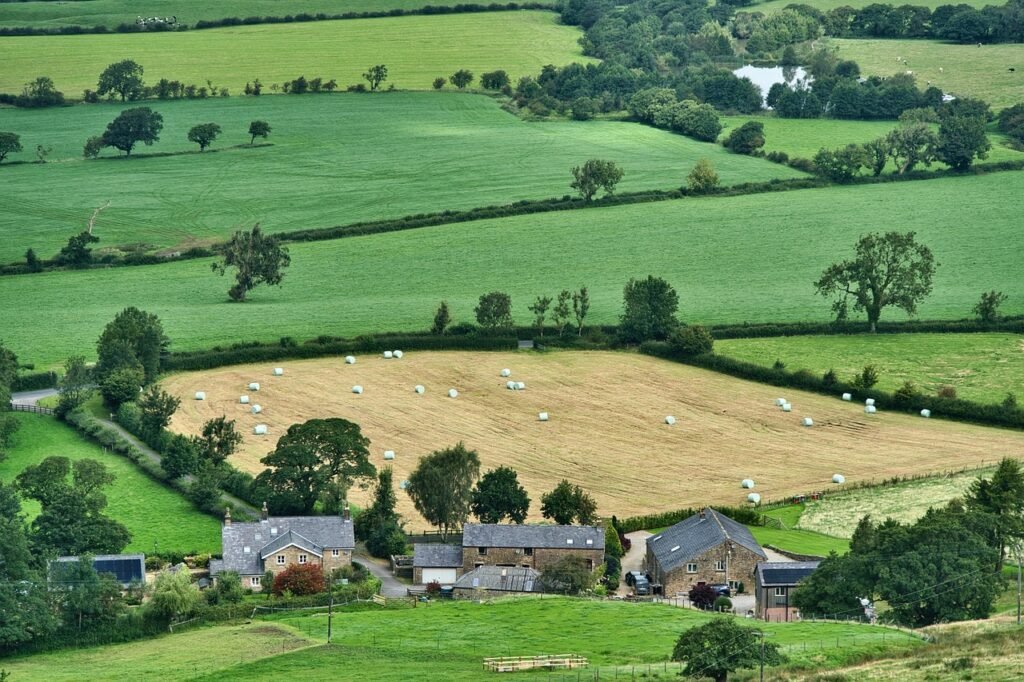WHAT IS FARM DIVERSIFICATION?
Farm diversification is an essential strategy for modern agricultural businesses. As global markets become increasingly volatile, diversifying operations can help farmers mitigate risks and enhance profitability. In this post, we’ll explore the concept of diversification in farming, its benefits, some successful examples and routes to achieve planning permission.

Understanding Farm Diversification
Farm diversification involves expanding the range of products or services offered by a farm, thereby reducing reliance on a single source of income. This approach allows farmers to adapt to changing market demands and environmental conditions. By exploring various avenues of income generation, farm diversification can support financial stability and growth.
The concept extends beyond just growing different crops; it includes alternative activities and services such as livestock raising, agritourism, or value-added products. The essence of diversification is to spread risk and take control of farm income.
The Importance of Diversification
Diversification planning plays a vital role in ensuring the long-term viability of farms. Here are several reasons why farmers should consider implementing diversification strategies:
- Risk Management
One of the significant risks in farming is market fluctuation. By involving multiple product lines or services, farmers can protect themselves against the poor performance of a single crop or livestock type. When one area struggles, others may flourish, ensuring that the farm remains profitable.
- Financial Stability
Diversifying income sources can help ensure a steadier cash flow throughout the year. Seasonal crops might yield high income at certain times, but having other ventures allows for an even distribution of income over time. This financial stability can ease cash flow pressures and allow farmers to invest in resources for growth.
- Market Opportunities
Farmers often have untapped resources that can be utilised. For instance, a vegetable farmer may have excess land suitable for growing herbs or even set up a small farm shop. Exploring these market opportunities can enhance competitiveness and expand the customer base.
- Sustainable Practices
Diversification often promotes sustainable farming practices. By rotating crops and diversifying agricultural approaches, farmers can improve soil health and reduce the need for chemical inputs. This aligns with the growing consumer demand for sustainable products and practices.
Examples of Diversification
Many farms have thrived through effective diversification planning. Some examples of farm diversification are outlined below:
- Equestrian
Diversifying into equestrian services can be a lucrative option for farms. This can include setting up livery yards, riding schools or equestrian event facilities. Farms can convert existing buildings into stables or arenas and offer additional services such as horse boarding, training and riding lessons.
- Barn Conversion
Barn conversions are a popular way to diversify farm income. These conversions can be used for residential purposes, holiday accommodations or commercial spaces. Class Q permitted development rights allow farmers to convert agricultural buildings into homes without full planning permission, provided certain conditions are met. This can create a steady stream through rentals or sales and enhance the farm’s overall value.
- BNG Accredited Scheme
Biodiversity Net Gain (BNG) schemes involve creating and managing habitats to offset the environmental impact of development projects. Farmers can sell BNG units to developers who need to meet biodiversity requirements. This provides a stable income stream and helps farmers contribute to environmental conservation. Agreements typically run for 30 years, requiring careful planning and management.
- Solar & Wind Farms
Investing in renewable energy systems like solar panels and wind turbines can significantly diversify farm income. This not only provides financial benefits but also helps meet environmental targets.
- Farm Shop
Setting up a farm shop allows farmers to sell their produce directly to consumers, cutting out the middleman and increasing profit margins. Farm shops can offer a range of products, including fresh produce, dairy, meats, and homemade goods. This not only boosts income but also strengthens the farm’s connection with the local community.
- Activity Park
Creating an activity park on farmland can attract visitors and generate additional income. Activity parks can include adventure playgrounds, zip lines, obstacle courses, and other recreational facilities. This type of diversification requires significant investment in infrastructure and marketing but can be highly profitable, especially if located near urban areas or tourist attractions.
- Dog Field
Dog fields are becoming increasingly popular as a farm diversification option. These secure fields provide a safe space for dogs to exercise off-leash, catering to the growing number of dog owners and the restrictions on public spaces. Setting up a dog field involves minimal initial investment and ongoing costs, making it a profitable venture with a fast return on investment.
Planning Permission for Farm Diversification
To obtain planning permission for farm diversification, start by assessing if your project falls under Permitted Development Rights (PDR). If not, prepare a detailed planning application, considering local planning policies, environmental impacts and community benefits. Most councils have specific polices related to farm diversification and prioritise these projects to support rural economies.
Consulting with planning experts can streamline the process and improve your chances of approval. Ensure your proposal aligns with the council’s guidelines and demonstrates how it will benefit the community and environment. Addressing potential issues like noise, flooding and access are crucial. Additionally, tackling factors such as the reuse of redundant buildings, impact on heritage sites and ecological assessments can strengthen your application.
By thoroughly preparing and adhering to council policies you can successfully navigate the planning system and achieve your farm diversification goals.
Final Thoughts
Farm diversification helps modern agricultural businesses mitigate risks and enhance profitability by expanding their range of products or services. This strategy supports financial stability, adapts to market demands, and promotes sustainable practices.
There are numerous ways to diversify your farm, but before you can proceed, you need to obtain the necessary consent. This can be achieved through Permitted Development Rights or by securing full planning permission.
For assistance with planning permission for your farm diversification, get in touch with our team. We’re here to help!
